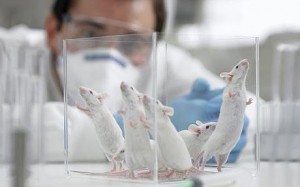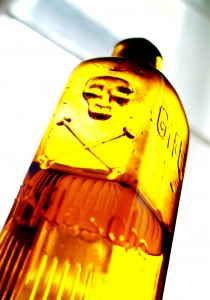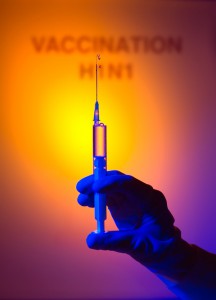Mold, Chemicals, Food additives, People and Cedar
I had the pleasure of spending a day in Phoenix, Arizona with  Dr. Doris Rapp. Doris was a true pioneer, the first to shine the light on the effects of allergens, heavy metal poisoning and environmental toxins on health, especially when it related to severe allergy cases and autism.
Dr. Doris Rapp. Doris was a true pioneer, the first to shine the light on the effects of allergens, heavy metal poisoning and environmental toxins on health, especially when it related to severe allergy cases and autism.
Later that night, I was shown a video tape that must have been at least two decades old. This video showed the actual lab tests done with one square inch of carpeting, taken from a first grade elementary classroom. What I saw shocked and horrified me. 
The piece of carpeting was placed at one end of a long tube which housed several mice “nose down” with their noses open to the air coming through the tube.
A fan was placed at one end of the tube behind the piece of carpeting blowing air across the top surface of the carpet into the tube. The test lasted only a few minutes.
After this exposure to breathing the air that had passed over such a small surface area of the carpet, the mice were then put through several extensive neurological tests. I was informed that normally when you hold a mouse by its tail and place it near a piece of wire mesh or screen it automatically grabs the screen with its paws. These mice could not.
Also, if you hold a healthy mouse upside down it will automatically “right itself” like a cat, quickly turning up on its feet but these could not. The mice could not complete any of the normal tests. They just flopped around like near lifeless toys. The neurological damage was so severe that some of the mice died. This is after being exposed for minutes to a very small dose of the toxins in the air that these first graders were breathing in mass quantity ALL DAY LONG.
According to an article in the New York Times Published: February 24, 2010, Autism was first identified in 1943 in an obscure medical journal. Since then it has become a frighteningly common affliction, with the Centers for Disease Control reporting recently that autism disorders now affect almost 1 percent of children. This constitutes a huge national health burden, and suspicions are growing that one culprit may be chemicals in the environment.
An article in a peer-reviewed medical journal, Current Opinion in Pediatrics, makes this explicit. The article cites “historically important, proof-of-concept studies that specifically link autism to environmental exposures experienced prenatally.”  It adds that the “likelihood is high” that many chemicals “have potential to cause injury to the developing brain and to produce neurodevelopmental disorders.”
It adds that the “likelihood is high” that many chemicals “have potential to cause injury to the developing brain and to produce neurodevelopmental disorders.”
The author is not a granola-munching crank but Dr. Philip J. Landrigan, professor of pediatrics at the Mount Sinai School of Medicine in New York and chairman of the school’s department of preventive medicine.
While his article is full of cautionary language, Dr. Landrigan told that he is increasingly confident that autism and other ailments are, in part, the result of the impact of environmental chemicals on the brain as it is being formed. “The crux of this is brain development,” he said. “If babies are exposed in the womb or shortly after birth to chemicals that interfere with brain development, the consequences last a lifetime.” Concern about toxins in the environment used to be a fringe view. But alarm has moved into the medical mainstream. Toxicologists, endocrinologists and oncologists seem to be the most concerned.
Suspicions of toxins arise partly because studies have found that disproportionate shares of children develop autism after they are exposed in the womb to medications such as thalidomide (a sedative), misoprostol (ulcer medicine) and valproic acid (anticonvulsant). Of children born to women who took valproic acid early in pregnancy, 11 percent were autistic. In each case, fetuses seem most vulnerable to these drugs in the first trimester of pregnancy, sometimes just a few weeks after conception.
One peer-reviewed study published this year, in Environmental Health Perspectives, gave a hint of the risks. Researchers measured the levels of suspect chemicals called phthalates in the urine of pregnant women. Among women with higher levels of certain phthalates (those commonly found in fragrances, shampoos, cosmetics and nail polishes), their children years later were more likely to display disruptive behavior. 
According to Atlanta Journal Constitution April 14, 2011 ,WKAR Atlanta April 13, 2011 and The Copenhagen Post April 15, 2011 the two CDC “top guys”, Dr. Poul Thorsen and Dr. Paul have both been caught lying about the relationships between autism and exposure to vaccines . Now a federal grand jury in Atlanta has indicted Thorsen and charged him with 13 counts of wire fraud, 9 counts of money laundering and stealing more than $1 million in grant money from the CDC over a four-year period.
Dr. Mercolacomments that “when two of the biggest names in vaccine research and support turn out to be guilty of fraud, major deception, lying and making unsubstantiated statements, it really calls into question the validity of their work on the vaccine front … and that’s putting it mildly. Yet, this news has only been quietly shared by a handful of media outlets.”
He goes on to say that “Countless American parents are putting their trust, and their child’s lives, in the hands of the U.S. Centers of Disease Control and Prevention (CDC) and the American Academy of Pediatrics (AAP) every time they vaccinate their children. Yet two of the CDC’s “go-to guys” have now been caught red-handed lying and, in the case of Dr. Poul Thorsen, committing outright fraud. This includes:
- Dr. Poul Thorsen, who was involved in several key studies the CDC uses to support their claims that MMR and mercury-containing vaccines, among others, are safe.
- Dr. Paul Offit, a very well-known and frequent proponent of mandatory vaccination, whose views are promoted by the AAP and who previously served as a member of The Advisory Committee on Immunization Practices (ACIP). ACIP is a 15-member panel of immunization experts, selected by the Secretary of the U.S. Department of Health and Human Services. They provide advice and guidelines to the CDC on vaccine-preventable diseases.”
100 Responses to Autism